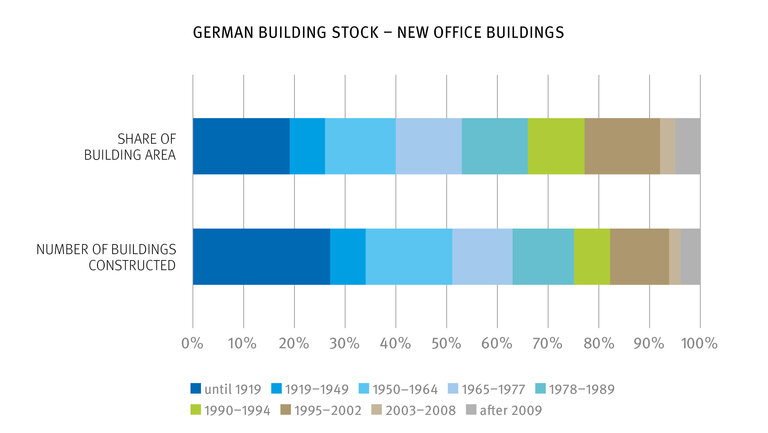In the past few years, green bonds have become increasingly popular: between 2013 and 2016 their share of newly issued securities rose more than sevenfold to USD 95.1 billion, and in 2017 to USD 156.7 billion. Issuers of green bonds undertake to use the issue proceeds to finance environmental and climate protection projects. These are increasingly projects in the area of building and production efficiency.
Benchmark for green bonds in Germany
Germany has also seen growing interest in green bonds. However, there is no standard system for evaluating buildings for green bonds in this country yet. The only guidelines are international ones, including the Climate Bonds Initiative. A non-profit organization, the CBI mainly focuses on investors, its main aim being to promote sustainable investment. To meet the criteria of the CBI, the commercial properties in the portfolio must be among the top 15 percent of the German building stock in terms of their carbon efficiency.
As a basis for the analysis on behalf of LBBW, Drees & Sommer’s experts used official data from the German Energy Agency (Deutsche Energie-Agentur, dena) and the German Energy-Saving Ordinance (Energieeinsparverordnung, EnEV). They established a clear connection between building age and energy efficiency, and were able to develop a method based on this finding.
Green bonds also ready for launching in Germany
The experts from Drees & Sommer are certain that green bonds will now also experience accelerated growth in Germany. Now that the methodology is established, other banks and insurance companies are likely also to start issuing green bonds in 2018.
Johannes Hopf, an energy design and sustainability consulting expert at Drees & Sommer, commented: ‘Our long experience with real estate projects and green building certification helps us to develop a suitable methodology and draw reliable conclusions about energy efficiency, even when the information on the specific buildings is limited.’
